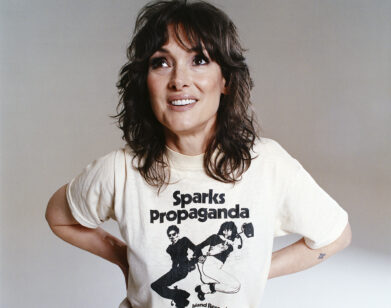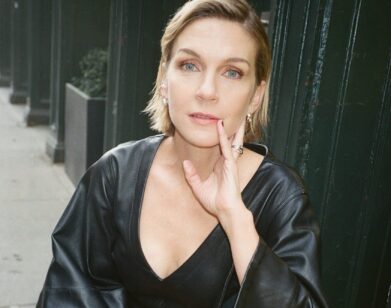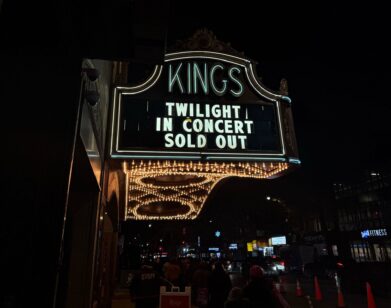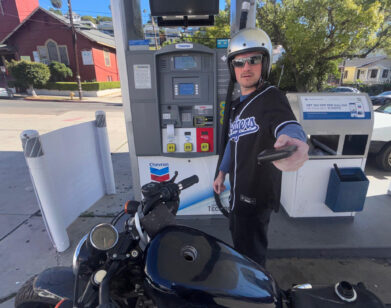Matt Tyrnauer’s Tale of Empire
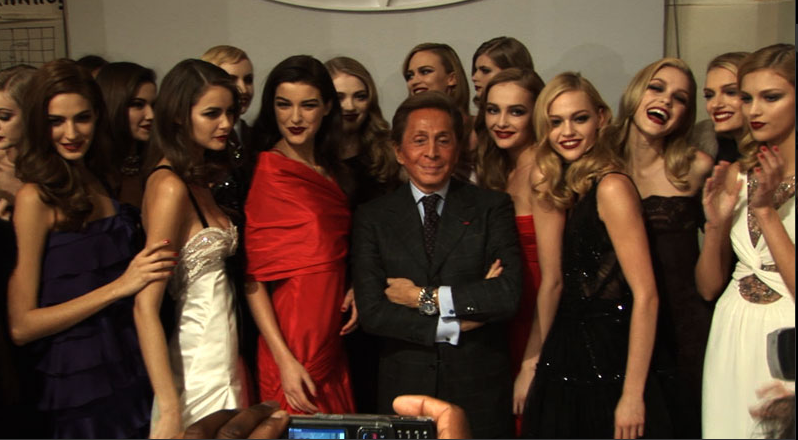
In Valentino: The Last Emperor, director Matt Tyrnauer sketches an intimate portrait of a high-living designer who gave the world Valentino Red but has rarely shown it his true colors: an explosive temperament, an obsession with details, a weakness for pugs. Interview talked to Tyrnauer about capturing the legendary couturier, and his disappearing world, on film.
DARRELL HARTMAN: You got a lot of access for this movie. Were there any set rules about what you could and couldn’t shoot?
MATT TYRNAUER: There was no formal arrangement. We were not prohibited from going places. They’re not so organized or stringent in Italy, they kind of go with the flow. We knew when to leave, we knew when to come back, and we basically had the whole fashion house wired. Everyone knew us and we became part of the family.
DH: On-screen and off, Valentino’s partner and gatekeeper, Giancarlo Giametti, seems to have had an even bigger role than Valentino. What was it like working with him?
MT: Giancarlo has a lot of nervous energy. He’s a director, really. He was trying to direct the movie over my shoulder. I don’t blame him—that’s been his job for 50 years. But I had final cut in the movie by contract and I wouldn’t have made the movie if I had not been completely independent.
DH: From a logistical point of view, what was the biggest challenge?
MT: They’d always change their mind. We were commuting from New York to Rome, so we would carefully figure out the best time to appear to get what we needed. And we would get to Rome with the crew, and I would go see Giancarlo in his office next to Mussolini’s office, and he’d be sitting behind his tiny antique wooden desk that’s dwarfed by the room and look at me and say, “So, what brings you to Rome?”
DH: A cultural thing?
MT: They would sort of keep you on your toes that way—that kind of Italian allergic reaction to eagerness. It’s very bruta figura, bad form, to be eager. You sort of glide in and have a conversation and work things out, then it takes two days to get up and running. I saw the euros just flying down the sewer.
DH: And on top of that, Valentino is not the most forthcoming subject.
MT: When Karl Lagerfeld does a documentary, it’s Karl Lagerfeld spouting in front of the camera for two hours. Valentino isn’t like that. He’s not very verbally expressive. He’s very controlled and he needs to be perfect all the time—never a hair out of place, always the impeccable outfit. Giancarlo says in the movie that no one really knows him, even his close friends. So what we found is that he’s actually a tremendous star—almost a movie star, really, because he plays himself all the time. The camera loves him.
DH: He’s basically a royal.
MT: He lives his life like the Queen of England—he lives in the bubble. But he designs for royals, so it’s almost a business decision, even though he would do it anyway. He wants to be part of that world. You wouldn’t think so at first, but Ralph Lauren and Valentino have a lot of common. Ralph Lauren was one of the first really to put himself at the center of the story, and Valentino was even earlier.
DH: And he’s kind of the living embodiment of old-world haute couture. What was it like to be immersed in that?
MT: If you’ve never seen it, there’s no way to explain it. It’s an extraordinarily beautiful thing. When I went to see Valentino in Rome, I discovered 120 women in these ateliers who sew $100,000 dresses. There are no sewing machines. It’s all done by hand for thousands of hours. It’s a dying art and Valentino is really the last practitioner, the last person at the top of his house, which is why I called it The Last Emperor. That world is gone. You can almost see it slipping away as the cameras are rolling.
DH: Did you have a fashion background before you did this film?
MT: Not at all. I knew nothing about it, and I think that was a help. They’re very used to meeting fashion journalists who know every collection—what the good years were, what the bad years were. So I think my naivete made me more palatable. And I didn’t want to make a fashion movie, really. I wanted to make a movie about their relationship.
DH: What about it interested you?
MT: It’s the deepest relationship I’ve ever seen, and no one’s ever really scratched the surface with them. They weren’t really openly gay. They’re in Rome, the city of the Vatican. They didn’t discuss this relationship, which I think is one of the great relationships. It’s beyond a marriage; it defies words. But maybe it doesn’t defy pictures.
DH: Speaking of words, was it tough working in multiple languages?
MT: They speak English, Italian and French all at the same time—it’s fantastic to listen to, and it makes for a wonderful confusion. It sort of helped us sometimes, though. When they didn’t want me to understand what was said, they would speak French. But the camera was going. They seemed to forget we could get it translated.
DH: I imagine they’re unhappy about certain scenes.
MT: There’s lots of stuff in the movie they didn’t like. But it wasn’t what you think. They have a fight where they call each other fat—but they were okay with that. And then there was another point when Giancarlo decides to tell Valentino, out of the blue, that he’s too tan.
DH: And those are just the little jabs.
MT: Valentino loses his temper a lot in the movie. He was letting the camera have it. He was letting me have it. He said, “My favorite part is when I yell at Giametti.” Then he recently said his least favorite part is when he yells at Giametti. So I think he has a conflict.
DH: Still, he reveals a lot of himself during those heated moments.
MT: He’s never really shown himself as anything other than this gracious diplomat of the dolce vita. That’s his preferred look. But he’s a temperamental genius—a man of cyclone force, passion, and perfectionist impulses who has very little tolerance for things that aren’t exactly as he wants them to be. His home life is as ordered and complex and sophisticated as his work life. You don’t find creations like this anymore. The Leopard comes to mind—this tale of a glorious, lost Italy. That’s Valentino.
DH: The ghost of Fellini is everywhere in this movie, starting with the Nino Rota score. Why did you make that link?
MT: Valentino’s Rome, so right there you have the built-in parallel. And the dolce vita era. One of my favorite scenes in Fellini is the ecclesiastical fashion show in Roma, and the end of 8 ½, when all the characters in the life of Guido, Marcello Mastroianni, get together and do this grand procession. That was on my mind, especially at the 45th anniversary, when all those characters in Valentino’s life returned to Rome. I kept watching that and saying, if only we can arrange that grand procession at the end…and it kind of happened.
DH: Did you know you’d get such a perfect ending?
MT: Valentino was 74 when we started shooting, and we knew it was going to be the end of an era. But I didn’t know they were going to go out with this enormous party, which I really think is the biggest event in the history of fashion. It was like the last class reunion of the jet set.
DH: Again: very Fellini, this huge spectacle.
MT: That was their goal. The balloons, the fireworks—it was very camera-ready. I’d wanted a big third-act finale, but we didn’t know what it was going to be. Then this fell out of the sky.
DH: What’s the biggest criticism you’ve gotten for this movie?
MT: I hear one, which is that there weren’t more talking heads. And I reject that criticism because the last thing I wanted was to sit there and look at people talking. I think people are conditioned to think of documentaries now as talking heads. This movie is not about that at all. It’s about watching people in action. It’s a fly-on-the-wall movie. To the critics who wanted more talking heads, I send a dozen dead roses.
Valentino: The Last Emperor opens today at Film Forum.


